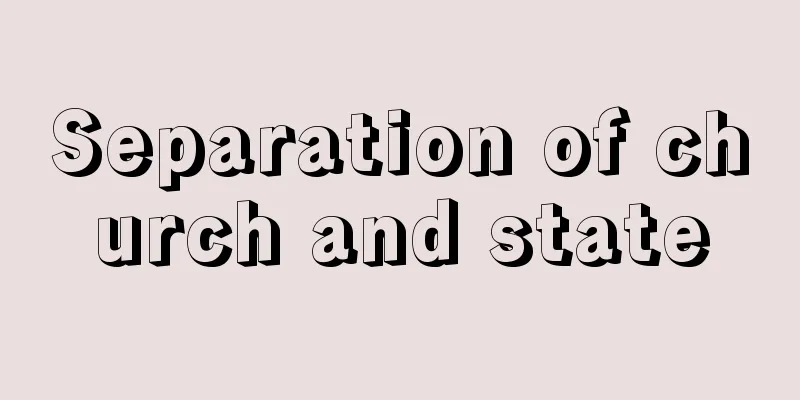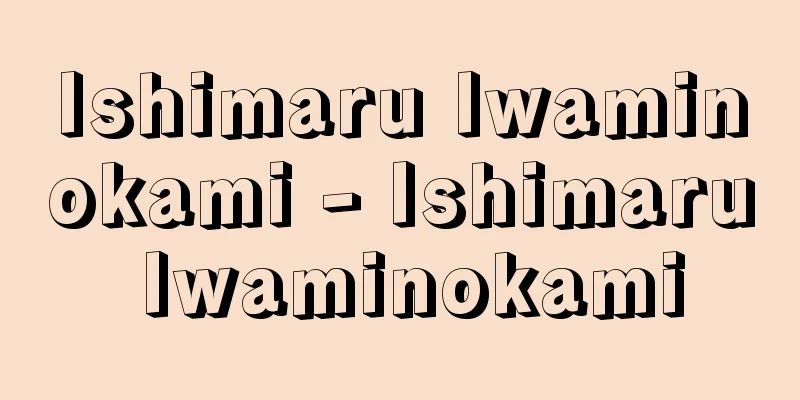Separation of church and state

|
The idea that politics and religion should be separated. (1) In the United States, this is a constitutional principle. Separation of Church and State This principle aims to guarantee freedom of religion or freedom of religion. In the United States before independence, many people fled religious persecution in continental Europe, so the guarantee of religious freedom was especially required. After independence, the Bill of Rights, which was enacted as a constitutional amendment in 1789, prohibited the state from making a particular religion the state religion, as in the United Kingdom, and also prohibited the state from regulating religious activities. This First Amendment does not simply guarantee freedom of religion, but also prohibits state interference in religion and religion (church) interference in state affairs, which is the idea of separation of church and state. (2) In the Japanese Constitution, this is described in the latter part of Article 20, Paragraph 1. This was based on the old State Shinto, but the specific contents included that the state would not grant political or economic privileges to specific religious organizations, and that the state and state agencies would not engage in religious education or other religious activities. In the political history of Japan after World War II, the separation of religion and state among religious political parties became an issue. The Komeito Party, founded in 1964, was based on the Soka Gakkai. However, from 1969 to 1970, the issue of obstruction of freedom of speech and publishing occurred, and the collusion between the Gakkai and the party came under severe public criticism. In response to this criticism, the Komeito Party announced a policy of separation of religion and state, and terminated the concurrent appointment of its members to positions in the Gakkai, and made it clear that the Gakkai would remain a support group for the party. On the Gakkai side, Chairman Ikeda declared at the headquarters general meeting in May 1970 that the Gakkai and the party would be completely separated in terms of system and function. However, the close relationship between the Gakkai and the party continues to exist. Source: Encyclopaedia Britannica Concise Encyclopedia About Encyclopaedia Britannica Concise Encyclopedia Information |
|
政治と宗教は分離されるべきであるという考え方。 (1) アメリカ合衆国では,憲法上の原則となっている。教会と国家の分離原則 Separation of Church and Stateともいう。この原則は,信教の自由あるいは宗教の自由を保障することを目的とするものである。独立前のアメリカにおいては,ヨーロッパ大陸における宗教的迫害を逃れて来た人々が多かったために,とりわけ宗教の自由の保障が要請された。アメリカ合衆国の独立後は 1789年に憲法修正条項として制定された権利章典 Bill of Rightsの修正第1条によって,イギリスのように国家が特定の宗教を国教とすることが禁止され,また国家による宗教活動の規制も禁止された。この修正第1条は,単純に信教の自由を保障するというものではなく,国家の宗教への介入,国家事項への宗教=教会の介入をともに禁止する,いわゆる政教分離の考え方をとるものとされている。 (2) 日本国憲法においては,その第 20条1項後段に記述されている。これはかつての国家神道を想定したものであるが,その具体的内容としては,国が特定の宗教団体に政治的または経済的特恵を与えないこと,および国や国の機関が宗教教育その他の宗教活動をしないことなどがあげられる。第2次世界大戦後の日本の政治史においては宗教政党における政教分離が問題となった。 1964年に創立された公明党は,創価学会を母体にしている。しかし,69年から 70年にかけて言論出版妨害問題が起り,学会と党の癒着が世論のきびしい批判を浴びた。この批判にこたえて公明党は政教分離の方針を打出し,所属議員の学会役職兼任を解き,学会は党の支持団体にとどめるなどを明らかにした。学会側も池田会長が 70年5月の本部総会で,学会と党を制度上,機能上完全に分離することを宣言した。しかし,学会と党との緊密な関係は依然として続いている。
出典 ブリタニカ国際大百科事典 小項目事典ブリタニカ国際大百科事典 小項目事典について 情報 |
<<: Summary of the Holy Teachings - Seikyouyoroku
>>: Seikyo Shimbun - Seikyo Shimbun
Recommend
Brahmin
…It is derived from the transliteration of the Sa...
Stigmata (English spelling) stigmatisation
The appearance of scars from the Passion of Christ...
Gazania longiscapa (English spelling) Gazania longiscapa
… [Munemin Yanagi]. … *Some of the terminology th...
Wind speed meter
An instrument for measuring wind speed. Various a...
Felonia
…violation of the duty of good faith between a lo...
American Revolution
...During this time, attempts were made to find a...
Snow blindness
Also known as snow blindness. Ophthalmia caused by...
Metro
…a concept that is the basis of ancient Greek eth...
Kodaira [town] - Obira
A town in Rumoi County, Hokkaido. It faces the Sea...
Japanese reed bunting (Japanese reed bunting)
A bird of the family Emberizidae in the order Pass...
Chinchilla
A rodent mammal of the Chinchilla family. Also kno...
os ethmoidale (English spelling) osethmoidale
…On the upper surface of the body there is a depr...
Japanese maple (English spelling)
...The main maple species found in Japan are as f...
alpine newt
...They lay about 200 to 300 eggs at a time. The ...
Casuarius unappendiculatus (English spelling)
… [Hiroyuki Morioka]. … *Some of the terminology ...









